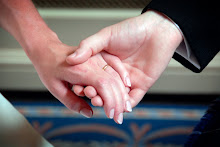Feng shui design also aims at avoiding exactly the opposite of the power areas, which are known as the house problem areas. If these spots are not carefully avoided they could seriously affect your health, finances and personal relationships. Feng shui design patterns are not based on speculations or superstitions, these are the results of an art that goes back thousands of years ago. Plus, the present-day applications and the success they enjoy are a relevant proof that feng shui works and really improves the lives of those who show interest in it.
If the bathroom is located in the front hall, very close to the door, it is very possible that the chi will be drained out before getting to flow in the rest of the house. Then, if it be locate on top of the kitchen as mentioned above, the water element specific to the bathroom, will extinguish the fire from the kitchen area. A good feng shui bathroom tip is to hang a mirror on the bathroom door in order to deflect the chi from being drained, while the toilet seat should kept only down when not in use. If the bathroom is located in the center of the house, you can correct this inconvenience by painting the walls red or using a crystal or an earth-type object like a ceramic bowl for instance as a means to stabilize energy.
In order to make it more accessible to the mass use, traditional feng shui is constantly analyzed, explained and promoted by both Asian and Western practitioners. Some of the feng shui schools that enjoy the highest reputation at the international level are slightly different from each other and definitely more extensive in practice and applications as compared to the Western feng shui associations. For instance, the San-ho School, that has a 1,000-history, focuses not as much on buildings as it devotes time to the relationships between valleys, mountains and water systems.
Even at the heart of traditional feng shui it often happens that different interpretations of the same charts and symbols be given. The explanation for such discrepancies comes from the separate evolution of the main concepts within one system or another. Generally speaking, the best-skilled traditional feng shui practitioners are trained not only in one school but in many, and they learn to apply the elements specific to one or another depending on the situations they are faced with. If you plan to turn to use traditional feng shui for home evaluation, you may have to provide the analyst with all the architectural information necessary for the analysis.
The demand for feng shui cures would be lower if people knew how to avoid common mistakes in the arrangement of their homes and offices. Cemeteries, noisy streets, land fills or disharmonious neighbors bring a bad energy on the house; one of the many cures for such cases consists in the use of mirrors that reflect the negative energies away from you; the mirror should be placed between you and the element you want to deflect, in this case the house windows that are the entrance gates for the noise, pollution or bad vibes.
Ferdinand Okeke is the author of the book Feng Shui For Everyday - A book about everything you need to know about the ancient Chinese art of Feng shui. You can find out more on this book here http://www.fengfshui.com also you can join a community of feng shui practitioners here http://www.fengfshui.com/FengShui-blog.
Personal Development
No comments:
Post a Comment